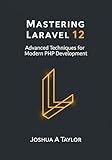Best Laravel Books to Buy in December 2025

Laravel: Up & Running: A Framework for Building Modern PHP Apps



Laravel 12 for Beginners & Beyond: A Complete Guide to Building Modern PHP Web Applications with Clean Architecture, Hands-On Projects, and Best Practices



Laravel: Up & Running: A Framework for Building Modern PHP Apps



Architecture of complex web applications. Second Edition.: With examples in Laravel(PHP)



Mastering Laravel 12 : Advanced Techniques for Modern PHP Development



Ultimate Laravel for Modern Web Development: Build Robust and Interactive Enterprise-Grade Web Apps using Laravel's MVC, Authentication, APIs, and ... (Advanced Web Frameworks — Multi-Tech Path)



Practical Laravel: Develop clean MVC web applications


In Laravel, you can use the groupBy method to group records based on a specific column, such as created_at.
To group by created_at in Laravel, you can use the following code snippet:
$data = Model::all()->groupBy(function($date) { return \Carbon\Carbon::parse($date->created_at)->format('Y-m-d'); });
This code snippet will group the records based on their created_at date. You can then loop through the grouped data to access the records for each specific date.
How to group records by day and find maximum in Laravel?
To group records by day and find the maximum value in Laravel, you can use the following steps:
- First, you need to have a model that represents the records you want to group and find the maximum value from.
- Use the groupBy() method in Laravel's query builder to group the records by day. You can use the DATE() function in MySQL to extract the day part of a datetime field.
$records = YourModel::selectRaw('DATE(created_at) as date, MAX(value) as max_value') ->groupBy(DB::raw('DATE(created_at)')) ->get();
- In this code snippet, replace YourModel with the name of your model and created_at with the field you want to group by.
- Finally, you can access the grouped records and the maximum value for each day in your view or controller:
foreach ($records as $record) { echo 'Date: ' . $record->date . ', Maximum Value: ' . $record->max_value; }
This way, you can group records by day and find the maximum value for each day using Laravel.
How to group data by time in Laravel?
You can use the Laravel Eloquent ORM to group data by time in Laravel. Here's how you can achieve this:
- Retrieve data from the database using Eloquent with the groupBy method. For example:
$data = YourModel::select('date_field', DB::raw('COUNT(*) as count')) ->groupBy('date_field') ->get();
- You can also group by time intervals using the Laravel query builder's timestamp functions to group by hours, minutes, or seconds. For example, to group by hours:
$data = YourModel::select(DB::raw('HOUR(date_field) as hour'), DB::raw('COUNT(*) as count')) ->groupBy('hour') ->get();
- You can further customize the grouping logic to suit your needs by using other Laravel query builder functions or Eloquent methods.
Remember to replace YourModel with the name of your Eloquent model and date_field with the field you want to group by.
What is the effect of group by on query performance in Laravel?
In Laravel, using the groupBy clause in a query can have both positive and negative effects on query performance.
The positive effect of using groupBy is that it can help to simplify and optimize your queries by grouping together similar data. This can be especially useful when working with large datasets, as it can reduce the number of records returned and improve the efficiency of the query.
However, there is a potential negative effect on query performance when using groupBy in that it can sometimes slow down the query execution. This is because grouping data requires additional processing and potentially sorting of the results, which can be time-consuming, especially with large datasets.
It is important to consider the specific use case and requirements of your application when deciding whether to use groupBy in your queries. In some cases, the benefits of grouping data together may outweigh any potential performance issues, while in other cases it may be more efficient to find alternative solutions. Testing and profiling your queries can help you determine the most efficient approach for your specific situation.
How to group by year and get minimum value in Laravel?
You can achieve this by using the groupBy() and min() functions provided by Laravel's query builder. Here is an example:
$minimumValues = YourModel::selectRaw('YEAR(date_column) as year, MIN(value_column) as min_value') ->groupBy('year') ->get();
dd($minimumValues);
In this example, replace YourModel with the actual model class you are using, date_column with the column containing the dates, and value_column with the column containing the values you want to get the minimum for.
This query will group the records by year, and for each year, it will calculate the minimum value for the specified column. The result will be an array of objects, each containing the year and the corresponding minimum value.
How to group by created_at column and count in Laravel?
To group by the created_at column and count in Laravel, you can use the groupBy and selectRaw methods in your query. Here's an example code snippet:
use App\Models\YourModel;
$countByCreatedAt = YourModel::selectRaw('created_at, count(*) as count') ->groupBy('created_at') ->get();
foreach($countByCreatedAt as $row){ $createdAt = $row->created_at; $count = $row->count; // Do something with $createdAt and $count }
In this code snippet, replace YourModel with the actual model you are working with. This query will group the records by the created_at column and count the number of records for each group. The results will be stored in the $countByCreatedAt variable as a collection of objects, where each object contains the created_at value and the corresponding count. You can then iterate through the collection and access the values as shown in the foreach loop.
What is grouping by created_at in Laravel?
Grouping by created_at in Laravel allows you to group your data based on the created_at column in your database table. This can be useful for organizing and aggregating data in your application.
For example, you can use the groupBy() method in Laravel to group your data by the created_at column and then perform operations such as counting the number of records in each group or calculating the sum of a particular column in each group.
Here is an example of how you can group data by created_at in Laravel:
$data = YourModel::groupBy('created_at') ->select('created_at', DB::raw('count(*) as count')) ->get();
This will return a collection of data grouped by the created_at column, with the count of records in each group. You can then iterate over this collection to display or manipulate the data as needed.
